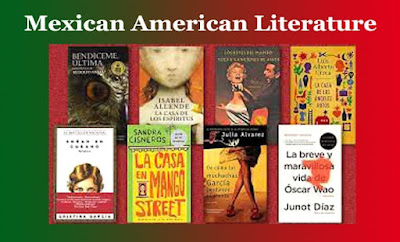American Literature Movements
American Literature Movements
American Literature Movements
Introduction to American Literature Movements
American literature has been shaped by various literary movements, each characterized by distinct themes, styles, and ideologies. These movements often respond to the social, cultural, and political contexts of their times. Here are some significant American literature movements.
American Literature Movements - Key Points
Colonial and Early American Literature (1607-1800): Primarily focused on religious and historical narratives, this period includes works like sermons, diaries, and early American poetry.
Notable Works: Anne Bradstreet's poetry, Jonathan Edwards's sermons.
Transcendentalism (1830-1860): Emphasizes the inherent goodness of people and nature, individualism, and the transcendence of the material world.
Notable Works: Ralph Waldo Emerson's essays (e.g., "Nature"), Henry David Thoreau's "Walden."
Romanticism (1800-1860): Focuses on emotion, imagination, and the exploration of the supernatural. Celebrates nature and individual expression.
Notable Works: Edgar Allan Poe's poetry and short stories, Nathaniel Hawthorne's "The Scarlet Letter."
Realism (1865-1900): Reflects an objective portrayal of everyday life, often focusing on the middle class. Addresses social issues and human behavior.
Notable Works: Mark Twain's "The Adventures of Huckleberry Finn," Henry James's "The Portrait of a Lady."
Naturalism (1880-1920): Influenced by scientific determinism, explores how external forces shape human destiny. Often presents a grim view of life.
Notable Works: Stephen Crane's "Maggie: A Girl of the Streets," Frank Norris's "McTeague."
Harlem Renaissance (1910-1930): Celebrates African American culture, art, and literature. Promotes racial pride and addresses social issues.
Notable Works: Langston Hughes's poetry, Zora Neale Hurston's "Their Eyes Were Watching God."
Lost Generation (1920s-1930s): Emerged after World War I, often depicts disillusionment and cynicism. Explores the impact of war on individuals.
Notable Works: F. Scott Fitzgerald's "The Great Gatsby," Ernest Hemingway's "The Sun Also Rises."
Modernism (1910-1945): Embraces experimentation with form, language, and narrative structure. Reacts against traditional norms.
Notable Works: T.S. Eliot's "The Waste Land," Virginia Woolf's "Mrs. Dalloway."
Southern Renaissance (1920s-1940s): Focuses on the cultural, social, and economic complexities of the American South. Explores Southern identity.
Notable Works: William Faulkner's "The Sound and the Fury," Flannery O'Connor's short stories.
Beat Generation (1940s-1960s): Rebel against conformity and consumerism. Embraces spontaneous creativity and a rejection of societal norms.
Notable Works: Jack Kerouac's "On the Road," Allen Ginsberg's "Howl."
Postmodernism (1945-present): Challenges traditional conventions of narrative and reality. Embraces intertextuality and self-reflexivity.
Notable Works: Thomas Pynchon's "The Crying of Lot 49," Don DeLillo's "White Noise."
Conclusion:
These American literary movements showcase the dynamic evolution of American literature, reflecting the shifting cultural, social, and artistic landscapes throughout its history. Each movement contributes unique perspectives, styles, and voices to the rich tapestry of American literary tradition. 0 0 0. American Literature Movements
Critical Essays on American Literature:
- Father of American Literature
- African American Literature Books
- Realism in American Literature
- Early American Literature
- American Literature - An Overview
- How Are American Literature and American Identity Interrelated
- What Impact Did Poe Have on American Literature
- American Literature Syllabi
- 19th Century American Literature
- Best American Literature
- Great American Literature
- American Literature Timeline
- American Literature Periods
- American Literature Class
- Health Anthology of American Literature
- American Literature Textbooks
- Romanticism in American Literature
- How Did Archetype of Devil Symbolize American Literature
- Latin American Literature
- Apologia American Literature
- Is American Literature Hard
- Classic African American Literature
- American Literature Antholotges
- Survey of American Literature
- 20th Century American Literature
- American Literature Reading List
- My Perspectives of American Literature
- Modernism First Developed in American Literature
- American Literature Syllabus
- American Literature Books for High School
- American Literature Example
- American Literature Journal
- American Literature
- British English and American English Which is Easier
- A Brief History of American English
- Difference Between British English and American English
- History of American Literature
- Contemporary American Literature
- Themes in American Literature
- Mexican American Literature
- Famous American Literature
- American Association Conference 2017
- Naturalism in American Literature
- American Literature Short Stories
- What Makes American Literature American..









Comments
Post a Comment